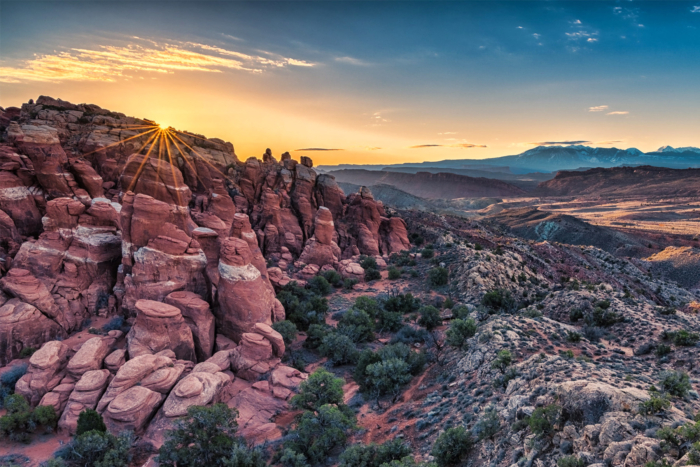After a long day on the trail backpacking, you want a hot meal quickly. But there’s also something magical about a real fire in the woods — as opposed to the hissing of isobutane burners.
There are a variety of lightweight stove options on the market these days that try to make cooking a breeze. The Solo Stove Lite is an easy way to still have a fire, without the hassle and smoke of a traditional fire. The Solo Stove uses its signature 360-degree Airflow Design that burns fuel more efficiently, creating a hotter, less smoky fire.
Solo Stove is likely best known for its large smokeless fire pits. The large steel fire pits are ubiquitous on social media and glamping sites across the country. However, Solo Stove also has a pint-sized version, specifically aimed at backpackers looking to go lightweight.
The concept is similar to the bigger version. It’s a small steel stove that generates heat using small twigs, sticks, and kindling as fuel. The Solo Stove Lite Gear Kit ($155) includes a nesting pot, an alcohol burner, firestarter, tinder on a rope, and windscreen — and the Lite stove itself.
Intrigued by the setup and promise of a low-smoke easy-to-use stove, I opted to shelve my gas fuel stove to give the Solo Stove a shot on a recent camping trip in Montana, and then British Columbia.
In short: Given the right conditions and set of circumstances, the Solo Stove Lite is a fantastic option to cook food and boil water in the backcountry. And nothing quite beats the atmosphere of cooking over an open fire. It’s no wonder the Solo Stove Lite is GearJunkie’s favorite wood-burning option for Best Backpacking Stoves.
Solo Stove Lite Review
Assembling the Kitchen

The Solo Stove Lite gear kit comes with six separate items to carry to create your backcountry camp kitchen, including the stove, pot, alcohol burner, fire striker, windscreen, and tinder-on-a-rope.
The heart of it is the ultralight stainless steel camp stove, which weighs in at 9 ounces and stands 5.7 inches tall. If this was all you carried, it would be considered ultralight. However, once I incorporated the other materials, it clocks in at more than a pound. Still, pretty lightweight all in all for a wood-burning stove.
You can also bring as many or as few of the accessories as you like. The stove on its own will work great to produce a small campfire to cook over.


Cooking in the Montana Backcountry

Solo Stove Lite: Worth the Effort?

Solo Stove Lite: Specs
Lite Camp Stove
- Diameter: 4.25 in.
- Height: 5.7 in.
- Weight: 9 oz.
- Materials: Stainless steel
Solo Stove Pot 900
- Diameter: 4.7 in.
- Height: 4.5 in.
- Weight: 7.8 oz.
- Materials: 304 stainless steel
- Volume: 30 oz. (900 ml)
Alcohol Burner
- Diameter: 2.9 in.
- Height: 1.8 in.
- Weight: 3.5 oz.
- Materials: Brass
- Fuel: Denatured alcohol
Windscreen
- Height: 9.5 in.
- Weight: 7.4 oz.
- Materials: Anodized Aluminum










